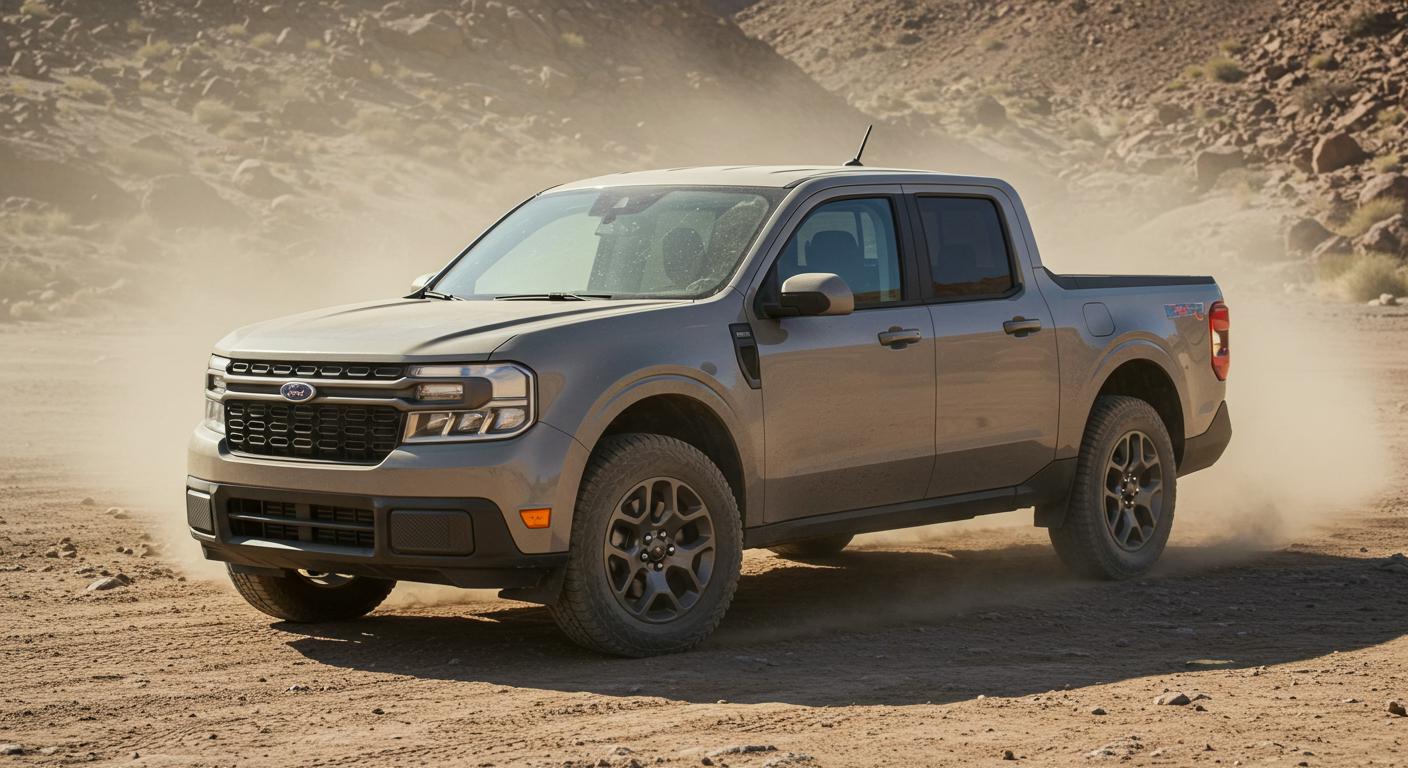Business
Dog Fever: Understanding, Symptoms, AND Treatment FOR Canine Illness
Dogs are often considered beloved members of our families, providing companionship, loyalty, and endless joy. However, just like humans, dogs can fall ill, and one common health concern they may face is dog fever. In this blog, we will explore what Dog Fever is, its symptoms, possible causes, and how to effectively manage and treat this condition to ensure our furry friends can make a swift recovery.
Understanding Dog Fever
How To Tell If A Dog Has A Fever? Dog fever, also known as canine fever, refers to an increase in body temperature beyond the normal range of 100.5 to 102.5 degrees Fahrenheit (38 to 39.2 degrees Celsius). It is a sign that the body is responding to an underlying infection, inflammation, or other health issues. Fever is a sign of a more serious medical problem rather than an illness in and of itself.
Common Causes of Dog Fever
Infections
Bacterial, viral, or fungal infections such as kennel cough, parvovirus, or Lyme disease can lead to a fever in dogs.
Inflammation
Conditions like arthritis, pancreatitis, or allergic reactions can cause an inflammatory response and result in an elevated body temperature.
Immune System Disorders
Autoimmune diseases or immune system dysfunctions can lead to a Dog Fever.
Medications or Vaccinations
Certain medications or adverse reactions to vaccines can occasionally cause a temporary fever.
Heatstroke
Exposure to excessive heat without proper hydration and cooling mechanisms can result in a dangerous fever.
Symptoms of Dog Fever
Detecting the presence of fever in dogs requires vigilant observation. Common signs of Dog Fever include:
- Elevated body temperature (above 102.5°F or 39.2°C)
- Lethargy and reduced activity
- Loss of appetite
- Shivering or trembling
- Rapid breathing and increased heart rate
- Warm ears and dry nose
- Coughing or sneezing in case of respiratory infections
Diagnosis And Veterinary Care
If you suspect your Dog Fever, it is essential to seek veterinary care. A veterinarian will perform a thorough physical examination and may recommend additional tests such as blood work, urinalysis, X-rays, or ultrasound to identify the underlying cause of the fever. Proper diagnosis is crucial for effective treatment and management.
Treatment and Management
Medication
Depending on the underlying cause, the veterinarian may prescribe antibiotics, antiviral drugs, or anti-inflammatory medications to combat the infection, reduce inflammation, and bring down the fever.
Fluid Therapy
Maintaining hydration is vital for Dog Fever. The veterinarian may administer fluids intravenously or subcutaneously to prevent dehydration.
Rest and Isolation
Providing a calm, quiet, and comfortable environment for the dog to rest and recover is essential. Isolating the dog from other pets can prevent the spread of infectious diseases.
Nutrition
Encouraging the dog to eat a balanced diet and providing easily digestible meals can help maintain strength and support the immune system during the recovery period.
Follow-up Care
Regular veterinary check-ups will monitor the dog’s progress and ensure complete recovery. Any medication should be administered as prescribed.
Prevention
Preventing fever in dogs involves taking proactive measures to safeguard their health:
Vaccinations
Ensure your dog is up to date on vaccinations to protect against common infectious diseases.
Parasite Control
Regularly administer flea, tick, and heartworm prevention medications to prevent infections and diseases.
Hygiene
Maintain good hygiene by keeping your dog’s living space clean, grooming regularly, and washing their bedding.
Temperature Regulation
Avoid exposing your dog to extreme temperatures. Provide adequate shade and fresh water during hot weather and avoid leaving them in cars, as heatstroke can lead to fever.
Regular Exercise and Balanced Diet
Keeping your dog physically active and feeding them a balanced diet will support their overall health and strengthen their immune system.
When to Seek Immediate Veterinary Care
While most cases of Dog Fever can be managed at home with veterinary guidance, there are instances when immediate medical attention is necessary. If you see any of these symptoms, it’s time to take your pet to the doctor.
- High fever (above 104°F or 40°C)
- Severe or prolonged symptoms such as persistent vomiting, diarrhea, or difficulty breathing
- Signs of severe pain or distress
- Changes in behavior, confusion, or disorientation
- Loss of consciousness
Supporting Your Dog’s Recovery at Home
Provide Comfort
Create a cozy and quiet space for your dog to rest and recover. Offer soft bedding, a comfortable temperature, and minimal disturbances.
Monitor Temperature
Regularly check your dog’s temperature with a rectal thermometer to track their progress. Consult your veterinarian for guidance on acceptable temperature ranges.
Hydration
Ensure fresh water is readily available for your dog at all times. Encourage them to drink by offering ice cubes or diluted low-sodium chicken broth if necessary.
Medication Adherence
Follow your vet’s instructions for giving any medicine. Follow the recommended dosage and complete the full course of treatment.
Watch for Complications
Keep an eye out for any worsening symptoms or new concerns. Report any changes to your veterinarian quickly.
Read More : Better Pets Life
Emotional Support and Recovery
Dog Fever, like humans, may experience stress or anxiety during their illness. Provide reassurance and emotional support to help them feel secure. Engage in gentle activities and spend quality time with your dog once they start to regain their strength.
The Importance of Regular Veterinary Check-ups
Regular veterinary check-ups play a crucial role in preventing and managing dog fever. Annual wellness exams allow veterinarians to monitor your dog’s overall health, identify any underlying conditions, and detect fever or other symptoms early on. During these visits, vaccinations can be administered, and preventive measures can be discussed to keep your dog protected from potential infections or diseases.
Educating Yourself as a Responsible Dog Owner
As a responsible dog owner, it is essential to educate yourself about common health concerns, including dog fever. Stay informed about potential risks, preventive measures, and signs of illness in dogs. Being knowledgeable will enable you to provide prompt care and seek veterinary attention when needed.
Spreading Awareness and Promoting Responsible Pet Ownership
Share the knowledge you have gained about dog fever with fellow dog owners, friends, and family members. Promote responsible pet ownership by emphasizing the importance of regular veterinary care, vaccinations, proper hygiene, and a balanced diet. Encourage others to be vigilant about their dog’s health and seek professional help when necessary.
Conclusion
Dog Fever is a common health issue that requires attention and proper care. By understanding the causes, symptoms, and treatment options, you can help your beloved furry friend recover quickly and prevent any complications. Remember to consult with your veterinarian for an accurate diagnosis and guidance on the best course of action. With your love, attention, and the right veterinary care, your dog can bounce back to their happy and healthy self in no time.
Business
AI-Powered IRS Enforcement in 2025: What Taxpayers Need to Know

The landscape of IRS tax debt is continually evolving, and 2025 brings its own set of timely considerations for taxpayers. With the Internal Revenue Service (IRS) continually enhancing its enforcement capabilities and leveraging new technologies, understanding your options and potential risks is more critical than ever.
The IRS’s Evolving Approach to Collections
In 2025, the IRS is doubling down on its efforts to collect unpaid taxes. This intensified focus is partly driven by increased funding and the strategic integration of artificial intelligence (AI) and data analytics. The agency is increasingly capable of identifying discrepancies in tax filings, flagging high-risk taxpayers, and prioritizing audit cases. This means a more precise and potentially more aggressive collection approach for individuals and businesses with outstanding tax liabilities.
While the IRS often emphasizes that its expanded enforcement is aimed at high-income tax evasion and complex corporate structures, the reality is that enhanced oversight can impact a broader range of taxpayers. Anyone with a tax debt must understand the IRS’s collection process and their rights within it.
This includes being aware of the Collection Statute Expiration Date (CSED), which typically gives the IRS 10 years to collect a tax debt from the date of assessment. Various actions, such as requesting an installment agreement or filing an Offer in Compromise, can suspend or extend this period.
Understanding Your Options for Tax Debt Relief
For taxpayers facing unmanageable tax debt, the IRS offers several relief programs designed to help alleviate financial burden. These programs, often categorized under the “Fresh Start Initiative,” aim to provide pathways to compliance and financial stability.
One of the most common options is an Installment Agreement. This allows taxpayers to make monthly payments over an extended period, typically up to 72 months, based on their ability to pay. The IRS has made efforts to simplify the criteria for streamlined installment agreements, particularly for those owing less than $50,000 in combined tax, penalties, and interest. While an installment agreement helps manage the debt, interest and penalties continue to accrue until the full amount is paid. You can find more information about IRS payment plans on the J. David Tax Law website.
Another significant option is an Offer in Compromise (OIC). An OIC allows certain taxpayers to resolve their tax liability for a lower amount than what they originally owe. This is generally reserved for individuals facing significant financial hardship where paying the full debt would prevent them from meeting basic living expenses. The IRS evaluates OIC applications based on the taxpayer’s ability to pay, income, expenses, and asset equity. The process can be complex, requiring thorough financial documentation and negotiation. Resources like the IRS’s OIC Pre-Qualifier Tool can provide an initial assessment of eligibility. For detailed guidance on navigating this intricate process, consider consulting with a qualified tax professional.
For those in severe financial distress, Currently Non-Collectible (CNC) Status might be an option. If the IRS determines that a taxpayer cannot pay their tax debt without undue hardship, it may temporarily delay collection. However, interest and penalties still continue to accrue during this period, and the IRS will periodically review the taxpayer’s financial situation.
The Importance of Professional Guidance in 2025
Given the IRS’s heightened focus on enforcement and the increasing complexity of tax laws and relief programs, seeking professional assistance is a wise decision for anyone with tax debt. A qualified tax attorney can help assess your specific situation, determine the most suitable relief option, and navigate the often-daunting IRS procedures. They can also represent you during audits or collection actions, ensuring your rights are protected and advocating on your behalf.
For instance, if you are located in Southern California and grappling with tax debt, a knowledgeable san diego tax attorney can provide invaluable support. Understanding the nuances of IRS policy and effectively communicating with the agency can make a significant difference in the outcome of your tax debt resolution.
In 2025, proactive engagement with your tax debt and informed decision-making are paramount. Staying ahead of potential issues and leveraging the available relief options can help ensure a fresh financial start.
Business
Best Ford Maverick Accessories For Your Truck in 2025
Transform your Ford Maverick with the ultimate accessories guide for 2025. Whether you drive the hybrid, XL, XLT, or Lariat trim, discover the best tonneau covers, performance parts, interior upgrades, and cargo solutions. This guide provides expert installation tips, financing options for wheels and tires, and recommendations tailored to suit every budget and driving style.

Whether you’re driving the efficient hybrid or the powerful EcoBoost, the Ford Maverick has quickly become America’s most versatile compact pickup truck. But to unlock its potential and make it uniquely yours, you’ll want to explore the best Ford Maverick accessories for performance, protection, and everyday convenience.
From weekend adventure seekers to daily work commuters, smart Ford Maverick accessories can completely transform your driving experience. Whether you require cargo solutions for work sites, comfort upgrades for long drives, or style enhancements that draw attention, the right accessories are crucial.
In this comprehensive guide, we’ll discuss the top Ford Maverick accessories for 2022-2025 models, including must-have exterior add-ons, interior comfort upgrades, and innovative cargo solutions that maximize your truck’s capability. We’ll also discuss smart upgrade strategies and wheel and tire financing options that make premium upgrades affordable for any budget.
What Are the Essential Ford Maverick Accessories Every Owner Needs?
Every Ford Maverick owner should start with these fundamental accessories that dramatically improve daily usability:
The Foundation Five:
- All-weather floor mats to handle mud, snow, and coffee spills
- Quality seat covers to preserve resale value and boost comfort
- Tonneau cover to protect cargo and improve fuel economy
- Tailgate assist to prevent slamming and extend tailgate life
- A bed liner or mat to protect against scratches and dents
These aren’t just nice-to-haves – they’re practical investments that pay for themselves through protection and convenience. Most bolt on in minutes but transform how your Maverick handles real-world use.
Pro Installation Tip: Start with protective accessories (mats, covers, liners), then add performance and style upgrades. This approach protects your investment while you plan more significant modifications.
Performance Parts That Unleash Your Ford Maverick’s Potential
Ready to boost your Maverick’s performance? Focus on these proven upgrades that deliver real-world results:
-
Engine and Exhaust Upgrades
The EcoBoost Enhancement Formula: Cold air intake, performance exhaust, and an upgraded air filter equal noticeable power gains and improved engine sound.
For EcoBoost models, a quality cold air intake system paired with a performance exhaust can add 15-25 horsepower while giving your compact pickup that satisfying rumble. Performance air filters improve airflow and are especially effective on turbocharged engines.
-
Suspension and Handling Improvements
The Off-Road Ready Setup: Upgraded struts + sway bars + all-terrain tires = confident handling on any surface.
Even if you’re not hitting serious trails, upgraded suspension components transform how your Maverick handles curves, cargo loads, and uneven surfaces. Performance struts that reduce body roll benefit AWD models especially.
Styling Secret: Suspension upgrades that improve function often enhance appearance too—a slightly lowered stance or improved wheel alignment creates a more aggressive, premium look.

Top Exterior Accessories for the 2025 Ford Maverick
Your Maverick’s exterior is your first impression; make it count with these smart additions:
-
Protection That Looks Good
- Fender flares for rugged style and paint protection
- Splash guards to keep road debris off your finish
- Running boards for easier cab access and side protection
- Paint protection film for high-impact areas
-
Style Upgrades That Turn Heads
- Custom decals and graphics for personalization
- LED light bars for enhanced visibility and attitude
- Roof racks for adventure gear and active lifestyles
- Premium alloy wheels with financing options available
The 22-Inch Wheel Upgrade Strategy: While 22-inch wheels create a dramatic visual impact, consider your driving style first. For daily drivers, 18-20 inch wheels often provide the best balance of style and ride comfort, while larger wheels excel for show and weekend cruising.
Interior Comfort: Seat Covers and Smart Storage Solutions
Transform your Maverick’s cabin into a comfortable, organized workspace:
-
Essential Interior Upgrades
The Daily Driver Comfort Formula: Premium seat covers + all-weather floor mats + organized storage = a cabin that stays comfortable and clean.
Choose seat covers based on your lifestyle – leather for a luxury feel, canvas for work durability, or neoprene for easy cleaning after outdoor adventures. Quality floor mats aren’t just about protection; they define your cabin’s look and feel.
-
Smart Storage Solutions
- Door storage pockets for tools and personal items
- Under-seat storage bins to maximize hidden space
- Console organizers to keep essentials accessible
- Phone mounts and charging stations for modern connectivity
Pro Organization Tip: Think vertically when adding storage. Door pockets and seat-back organizers use otherwise wasted space while keeping frequently used items within easy reach.
Cargo Accessories That Maximize Your 2025 Ford Maverick’s Hauling Power
Don’t let the “compact” designation fool you; with the right cargo accessories, your Ford Maverick can handle surprisingly large loads:
Essential Cargo Solutions
The Maximum Utility Setup: Bed extender + tie-down system + heavy-duty bed mat = compact pickup with full-size capability.
- Bed extenders effectively increase your cargo space for long items
- Cargo nets and tie-down kits secure loads safely and legally
- Heavy-duty bed mats prevent damage while providing non-slip surfaces
- Hitch accessories expand towing and carrying options
Professional-Grade Storage
For contractors and serious haulers, consider:
- Locking toolboxes for valuable equipment security
- Bed rail systems for customizable tie-down points
- Ladder racks for construction and trade work
- Drawer systems for organized tool storage
Ford Maverick Hybrid: Eco-Friendly Accessories That Enhance Efficiency
Driving the Ford Maverick Hybrid? Choose accessories that complement your truck’s efficiency focus:
Efficiency-Focused Upgrades
- Lightweight tonneau covers that reduce drag without adding weight
- Low-rolling-resistance tires for maximum fuel economy
- Aerodynamic running boards that don’t create additional wind resistance
- LED lighting upgrades for reduced electrical load
Hybrid Owner Pro Tip: Every pound and aerodynamic consideration matters more on hybrid models. Choose accessories that enhance function without compromising the fuel efficiency that makes your Maverick special.
Financing Your Dream Wheel Setup
Wheel and Tire Financing Made Simple: Many retailers now offer wheel and tire financing options, making upgrading to 22-inch wheels, 24-inch rims, or premium tire packages easier. Quality retailers like Discounted Wheel Warehouse offer extensive wheel selections and flexible financing programs.
Installing a Tailgate Assist: The 15-Minute Upgrade That Changes Everything
One of the most satisfying Ford Maverick accessories you can install yourself:
Why Every Maverick Needs Tailgate Assist
- Prevents costly tailgate damage from harsh closing
- Adds a premium feel to daily use
- Reduces physical strain when loading frequently
- Simple installation with basic tools
The DIY Installation Process
Step 1: Purchase a Maverick-compatible tailgate assist kit
Step 2: Remove one factory bolt using basic tools
Step 3: Install bracket and shock following included instructions
Step 4: Test operation and adjust tension if needed
Step 5: Enjoy smooth, controlled tailgate operation for years
Installation Secret: Most tailgate assist kits install in 10-15 minutes and require only basic tools. The difference in daily use quality is immediate and dramatic.
Budget-Friendly vs. Premium: Ford Maverick Accessories for Every Budget
Essential Upgrades Under $100
- All-weather floor mats ($50-80)
- Basic seat covers ($40-70)
- Splash guards ($30-60)
- Bed mat ($60-90)
Mid-Range Improvements ($100-500)
- Quality tonneau covers ($200-400)
- Performance air filters ($80-150)
- Tailgate assist kits ($100-200)
- Custom decals and graphics ($50-300)
Premium Upgrades ($500+)
- Wheel and tire packages ($800-2,500)
- Retractable tonneau covers ($800-1,500)
- Complete exhaust systems ($600-1,200)
- Professional suspension upgrades ($1,000-3,000)
Smart Shopping Strategy: Start with protective accessories that prevent damage, then add performance and style upgrades over time. This approach spreads costs while protecting your investment.
Where to Buy Reliable Ford Maverick Parts and Accessories
Top-Rated Retailers
- Ford.com for OEM parts and warranty-backed accessories
- DiscountedWheelWarehouse.com for a comprehensive aftermarket selection
- Local Ford dealers for professional installation and service
What to Look for in Quality Accessories
- Vehicle-specific fit confirmed for Maverick 2022-2025 models
- Solid warranty coverage from reputable manufacturers
- Professional installation guides or dealer installation options
- Real customer reviews from verified Maverick owners
Final Thoughts
The best Ford Maverick accessories are the ones that enhance how you actually use your truck. Whether you’re optimizing for work capability, weekend adventures, or daily comfort, the right accessories transform your compact pickup into exactly the vehicle you need.
Start with the basics: floor mats, seat covers, and a tonneau cover, and then build your accessory collection based on your lifestyle and priorities. With smart choices and proper installation, your Ford Maverick can punch well above its weight class in capability, comfort, and style.
Frequently Asked Questions
- What are the most popular Ford Maverick accessories for 2025? Tonneau covers, all-weather floor mats, seat covers, and cargo organizers consistently rank as top sellers. Performance parts like cold air intakes are popular among EcoBoost owners.
- Will aftermarket Ford Maverick accessories void my warranty? No, as long as accessories don’t directly cause mechanical issues. The Magnuson-Moss Warranty Act protects your right to use aftermarket parts.
- Do tonneau covers really improve fuel economy on the Maverick? Yes, quality tonneau covers can improve fuel economy by 5-12% by reducing aerodynamic drag, especially at highway speeds.
- Are wheel and tire financing options available for Ford Maverick owners? Absolutely. Many retailers offer wheel and tire financing with competitive rates, instant approval, and professional installation for 22-inch wheels, 24-inch rims, and premium tire packages.
- Can I install Ford Maverick accessories myself? Many accessories, like floor mats, seat covers, tailgate assists, and bed mats, install easily with basic tools. Complex items like exhaust systems or suspension upgrades typically require professional installation.
Business
Secrets to a Spotless Industrial Storage System

Industrial storage tanks are the unsung heroes of many operations. They hold everything from water and oil to chemicals and waste—often in large volumes, under pressure, and in demanding conditions. But like any hard-working system, these tanks require consistent upkeep. If maintenance is skipped or cleaning is delayed, performance can suffer—and risks can rise fast.
Keeping tanks spotless is more than just good housekeeping. It’s essential for safety, efficiency, and compliance. Whether you’re overseeing a small facility or a complex plant, understanding what goes into proper industrial tank care can make all the difference.
Why Tank Cleaning Should Be a Priority
Over time, all tanks accumulate residue. Oil tanks collect sludge, water tanks gather sediment, and chemical tanks can develop dangerous byproducts. Even tanks that appear clean may hide build-up in hard-to-reach corners or below fluid lines.
Ignoring this buildup can result in:
- Reduced capacity: Sediment and sludge take up space, limiting the usable volume of your tanks.
- Flow restrictions: Clogged outlets or uneven surfaces can interfere with consistent flow and pressure.
- Contamination risks: Residue can compromise the purity of stored substances or affect chemical reactions.
- Accelerated corrosion: Moisture and chemicals sitting in one place for too long can eat away at the tank’s structure.
Regular cleaning ensures you’re not just storing material—you’re doing it safely and efficiently.
What Gets Left Behind?
Tank residue can vary widely depending on what’s stored. Here are some common culprits:
- Sludge: Formed from settled particles, microbial growth, and oil breakdown over time.
- Scale: Mineral deposits from hard water or chemical mixtures.
- Rust: From oxidation, especially in steel tanks exposed to moisture or fluctuating temperatures.
- Residual chemicals: Leftover solvents or reactive materials from previous contents.
In industrial settings, cross-contamination is a serious concern. Without proper cleaning between uses or scheduled intervals, new batches of product can be compromised before they even leave the tank.
Signs It’s Time for a Clean
Even when not visible, dirty tanks leave a trail of clues. Watch for these indicators:
- Slower pumping or flow irregularities
- Strange smells coming from vents or access ports
- Cloudy or discolored output
- Increasingly frequent filter changes
- Internal sensors or gauges giving inconsistent readings
These symptoms suggest that residue may be affecting performance—and that it’s time for a full cleaning.
How Industrial Cleaning Is Done Right
Professional tank cleaning is a carefully planned process. It requires the right tools, trained personnel, and a safety-first approach.
Typical steps include:
- Tank drainage: All liquid contents are safely removed and collected for storage, disposal, or reuse.
- Ventilation: The tank is aired out to remove hazardous gases and reduce pressure.
- Confined space entry: Certified technicians enter the tank (if necessary), using protective equipment and monitored protocols.
- Manual or automated cleaning: Using pressure washers, chemical solvents, or rotary nozzles depending on the tank type.
- Waste disposal: All sludge and debris are safely collected and disposed of according to local regulations.
- Inspection: Once clean, tanks are inspected for corrosion, wear, or structural damage before being returned to service.
Done regularly, this process supports longevity and reduces the risk of emergency downtime.
Customized Schedules for Different Operations
Not every tank needs the same cleaning schedule. Frequency depends on the material stored, the environment, and the facility’s usage patterns. For example:
- Water tanks in clean environments may only need annual or bi-annual cleaning.
- Oil tanks often require cleaning every 3–5 years, or more often with high throughput.
- Chemical tanks may need cleanings after each product cycle to prevent cross-contamination.
- Outdoor tanks are more exposed to environmental contaminants and may need more frequent attention.
A good rule of thumb: if it’s been more than two years since your last deep clean, it’s worth booking an inspection.
For a deeper look at how expert cleaning can extend your equipment’s lifespan and improve operations, explore this industrial tank cleaning overview focused on safe and effective practices.
The Payoff: Efficiency, Safety, and Compliance
Well-maintained tanks operate more efficiently. Fluids move faster, sensors perform accurately, and less energy is wasted in compensating for clogged lines or blocked valves. Clean tanks also reduce the likelihood of workplace accidents, environmental incidents, or unexpected shutdowns.
From a regulatory perspective, staying on top of tank maintenance helps ensure compliance with environmental, health, and safety standards. Clean tanks demonstrate that your operation takes safety seriously—and that matters during inspections or audits.
Making Clean Part of Your Routine
Tank cleaning isn’t a one-time fix—it’s a long-term strategy. By incorporating routine cleaning into your maintenance calendar, you ensure that your facility stays ready, reliable, and productive no matter what’s in storage.
Investing in clean tanks is investing in operational excellence. The payoff is less downtime, fewer surprises, and a stronger foundation for everything your facility does.
-

 Travel4 months ago
Travel4 months agoSave on Campervan Rentals with a roadsurfer Gutscheincode
-

 Travel4 months ago
Travel4 months ago10 Things to Do in Punta Mita
-

 Travel5 months ago
Travel5 months agoBest Things to Do in New York City – Ultimate Travel Guide
-

 Real Estate4 months ago
Real Estate4 months agoHow to Be the Best Real Estate Agent Murfreesboro
-

 Photography5 months ago
Photography5 months agoThe Ultimate Guide to 35mm Film Developing Lab
-

 Real Estate4 months ago
Real Estate4 months agoFind the Best Real Estate Agents Main Line
-

 Real Estate4 months ago
Real Estate4 months agoExplore New Real Estate Programs in Marrakech
-

 Travel3 months ago
Travel3 months agoTailored Tours to Switzerland | Private & VVIP Experiences





















